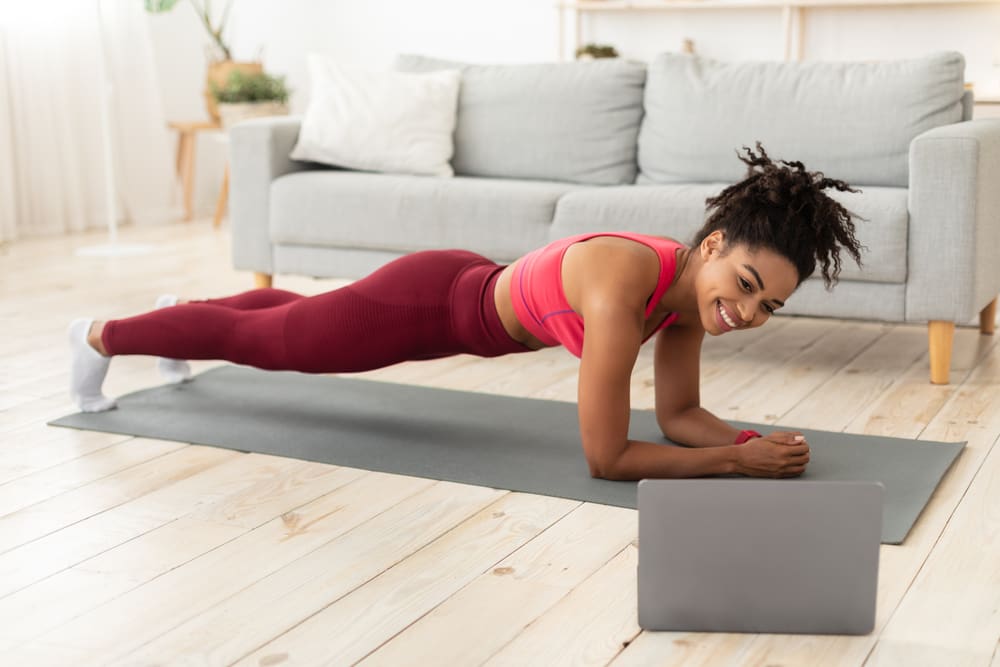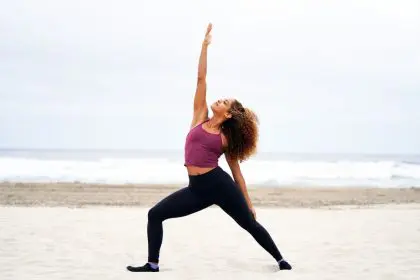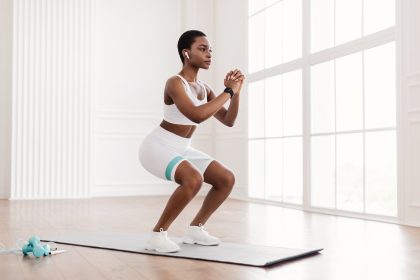Let’s be real. You’re probably reading this hunched over your phone or slumped in front of your computer. No judgment—we’ve all been there. That dull ache between your shoulder blades? The stiff neck that’s become your constant companion? Your body’s sending SOS signals about your posture that you’ve been ignoring for way too long.
Bad posture isn’t just about looking like you’ve got the weight of the world on your shoulders. It’s silently sabotaging your health, mood, and even how others perceive you. The good news? You don’t need expensive gadgets or hours at physical therapy to fix what years of slouching has created. Just a few strategic minutes of movement daily can reverse the damage and transform how you carry yourself.
Ready to stand tall again? Your body’s about to thank you in ways you never expected.
What’s really happening to your slouching body
Before diving into exercises, let’s understand what poor posture actually does to you. This isn’t just about aesthetics—it’s about your body slowly breaking down.
That forward head position from constantly looking down at devices puts up to 60 pounds of extra pressure on your spine. Your neck muscles strain to hold up your 10-pound head against gravity in this unnatural position, leading to that chronic tension headache you’ve come to accept as normal.
Meanwhile, your chest muscles tighten and shorten while your upper back muscles weaken from being constantly stretched. This creates the classic rounded shoulder look that screams “I spend too much time at a desk.”
Your hip flexors—muscles that connect your spine to your legs—shorten from prolonged sitting, pulling your pelvis out of alignment and creating that little pot belly even if you’re otherwise fit. This pelvic tilt often leads to lower back pain that no amount of stretching seems to fix.
Perhaps most troubling is how this gradually affects your breathing. When your chest is collapsed, your lungs can’t fully expand. This shallow breathing reduces oxygen intake, contributing to fatigue and brain fog you might be blaming on lack of sleep or stress.
The foundation fix for better alignment
The wall stand might look ridiculously simple, but it’s your posture’s best friend. This exercise resets your body’s alignment and gives you a physical reference for how proper posture should feel.
Stand with your back against a wall, heels about 6 inches from the baseboard. The back of your head, your shoulder blades, and your buttocks should all touch the wall. There might be a slight space at your lower back, which is normal due to its natural curve.
At first, this position might feel awkward or like you’re sticking your chest out too far—that’s just how foreign good posture has become to your body. Hold this position for 30 seconds initially, working up to 1-2 minutes. The goal isn’t just holding the position but memorizing how it feels so you can recreate it when you step away from the wall.
Try this several times daily, especially after long periods of sitting. It takes only moments but reinforces proper alignment throughout your day. Think of it as hitting the reset button on your posture.
Releasing the tech neck tension
Chin tucks target the deep neck flexors—muscles that weaken when we spend hours looking down at screens. Strengthening these muscles helps pull your head back into proper alignment above your shoulders.
Sitting or standing tall, gently draw your chin straight back, creating a “double chin” sensation. Imagine your head being pulled up by a string while your chin moves back horizontally. Hold for 5 seconds and release. Aim for 10-15 repetitions several times daily.
The beauty of chin tucks is their subtlety—you can do them anywhere without drawing attention. Try them while waiting at traffic lights, during commercials, or whenever you catch yourself falling into that forward head position.
For deeper release, combine with gentle neck stretches. Tilt your ear toward your shoulder, holding for 20-30 seconds on each side. The stretch should feel good—never painful. This helps counteract the muscle imbalances created by constantly looking down.
Opening the hunched shoulders
Doorway chest stretches work wonders for counteracting the rounded shoulders that come from typing, driving, and phone scrolling. These activities cause your chest muscles to tighten and pull your shoulders forward.
Stand in a doorway with your arms raised to form a 90-degree angle, elbows at shoulder height. Place your forearms against the doorframe, one foot forward for stability. Gently lean forward until you feel a comfortable stretch across your chest. Hold for 20-30 seconds, breathing deeply.
For variety, try different arm positions—higher to target different parts of the chest muscles, or one arm at a time for focused release. Perform this stretch 2-3 times daily, especially after long periods at your desk.
Band pull-aparts complement this stretch by strengthening your upper back muscles. Hold a resistance band with both hands in front of you, arms extended. Keeping your arms straight, pull the band apart, squeezing your shoulder blades together. The movement should make you feel like you’re trying to crack a walnut between your shoulder blades.
Perform 10-15 repetitions, focusing on slow, controlled movement rather than speed. This exercise directly counters the forward shoulder position by activating the exact muscles that need to be stronger to maintain proper posture.
Correcting the core for spinal support
Your core muscles are your body’s natural corset, designed to hold your spine in proper alignment. Modern life has weakened this support system, but targeted exercises can rebuild it.
The bird dog exercise strengthens deep core stabilizers while improving balance and coordination. Begin on all fours, hands under shoulders and knees under hips. Simultaneously extend your right arm forward and left leg backward, keeping your hips and shoulders square. Hold for 5 seconds, then return to start position and switch sides.
Focus on keeping your back flat—no arching or sagging. Start with 5 repetitions on each side, building to 10-12 as you get stronger. The challenge is maintaining stability through your core while your limbs are moving.
Glute bridges reactivate your often-dormant gluteal muscles while alleviating pressure on your lower back. Lie on your back with knees bent, feet flat on the floor hip-width apart. Press through your heels to lift your hips toward the ceiling, creating a straight line from shoulders to knees. Squeeze your glutes at the top, hold for 2-3 seconds, then lower with control.
Perform 10-15 repetitions, focusing on the mind-muscle connection with your glutes. This exercise helps correct the anterior pelvic tilt that often accompanies poor posture and contributes to lower back pain.
The full-body posture reset
The wall angel combines elements of several posture exercises into one powerhouse movement that addresses multiple aspects of alignment simultaneously.
Stand with your back against a wall as in the wall stand. Bring your arms up to form a “W” with elbows bent and the backs of your hands touching the wall. Slowly slide your arms up the wall into a “Y” position, then back down to the “W,” keeping your hands and elbows in contact with the wall throughout.
If you can’t keep contact with the wall, you’ve discovered exactly how tight your chest and shoulders have become. Don’t force it—start where you can and work progressively to increase your range of motion.
Aim for 8-10 slow repetitions. This exercise strengthens the mid-back muscles while stretching the chest and shoulders—exactly what most people with poor posture need.
For a dynamic full-body reset, try the world’s greatest stretch. From a low lunge position, place the hand on the same side as your front leg on the ground inside your foot. Rotate your other arm toward the ceiling, opening your chest. This movement counteracts the effects of prolonged sitting by stretching hip flexors, activating the core, and opening the chest and shoulders simultaneously.
Perform 5-6 repetitions on each side, moving with your breath for maximum benefit. This exercise is particularly effective as part of your morning routine to set up proper alignment for the day.
Making posture improvement stick
The biggest challenge isn’t learning these exercises—it’s remembering to do them consistently. These practical strategies help transform occasional efforts into lasting change.
Set posture alarms on your phone to remind you to check and reset your alignment throughout the day. These micro-corrections prevent you from settling into poor posture for hours at a time.
Attach posture exercises to existing habits. Do chin tucks every time you check your phone. Practice wall stands while brushing your teeth. This habit stacking makes posture work part of your routine rather than another thing on your to-do list.
Make your environment work for you. Adjust your workstation so your screens are at eye level. Use a supportive chair or try a standing desk. Even better, alternate between sitting and standing throughout your day.
Remember that perfect posture doesn’t mean rigid posture. The healthiest approach is dynamic posture—moving frequently and changing positions rather than forcing yourself to maintain one “perfect” position all day.
Track your progress by taking monthly photos from the side or measuring the distance between your ears and shoulders. These visual cues provide motivation as you see measurable changes in your alignment.
Beyond the physical benefits
The rewards of better posture extend far beyond relieving pain. Research shows that upright posture actually affects your hormones, potentially lowering stress hormones while boosting testosterone and serotonin. This chemical shift can improve your mood and energy levels within minutes.
Your breathing improves dramatically with better posture, increasing oxygen intake by up to 30% compared to slumped posture. This extra oxygen translates to improved concentration, reduced fatigue, and better endurance during workouts.
Perhaps most surprising is how posture affects social perception. Studies show that people with upright posture are consistently rated as more confident, capable, and approachable. Your mother was right all along—standing tall really does make a difference in how the world sees you.
Start today with just five minutes of these targeted exercises. Your future self—standing taller, breathing easier, and moving without pain—will thank you for it.















